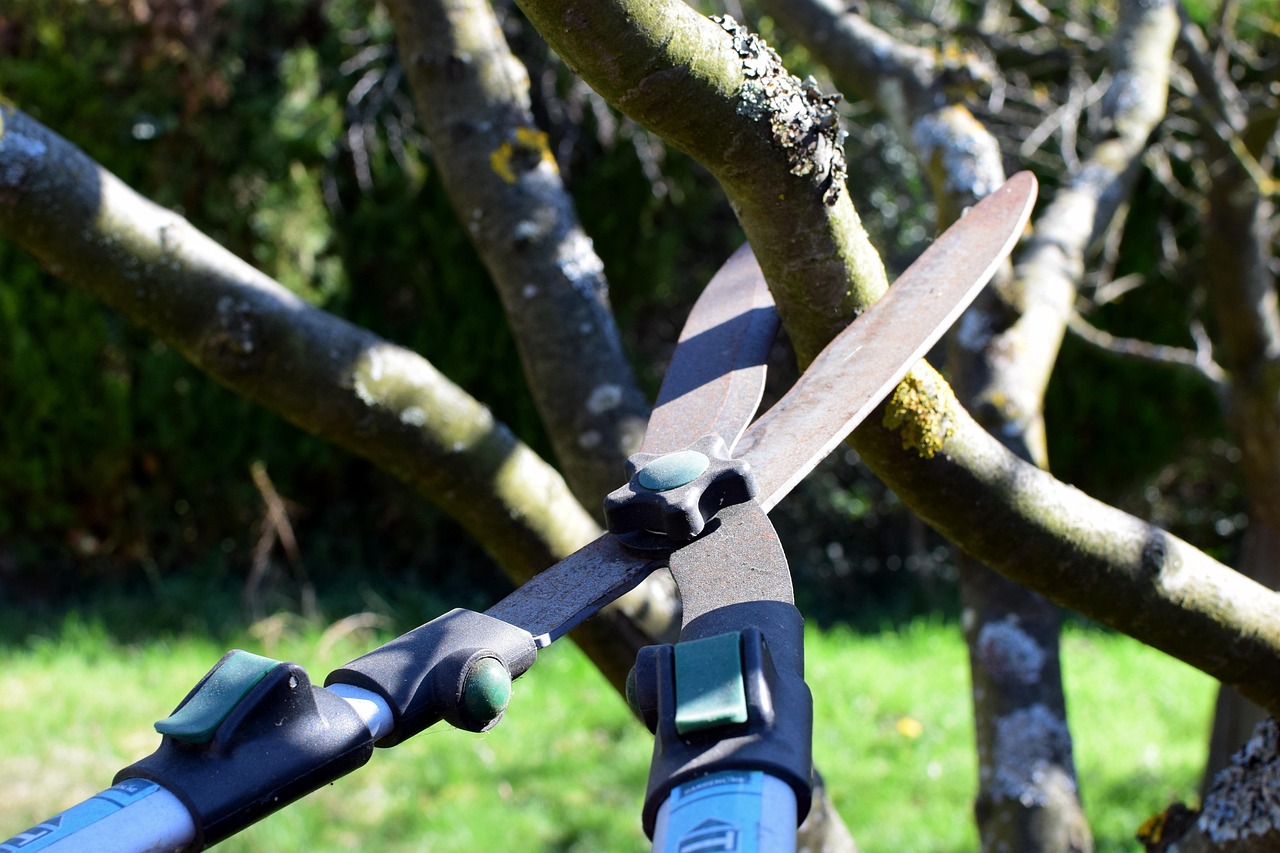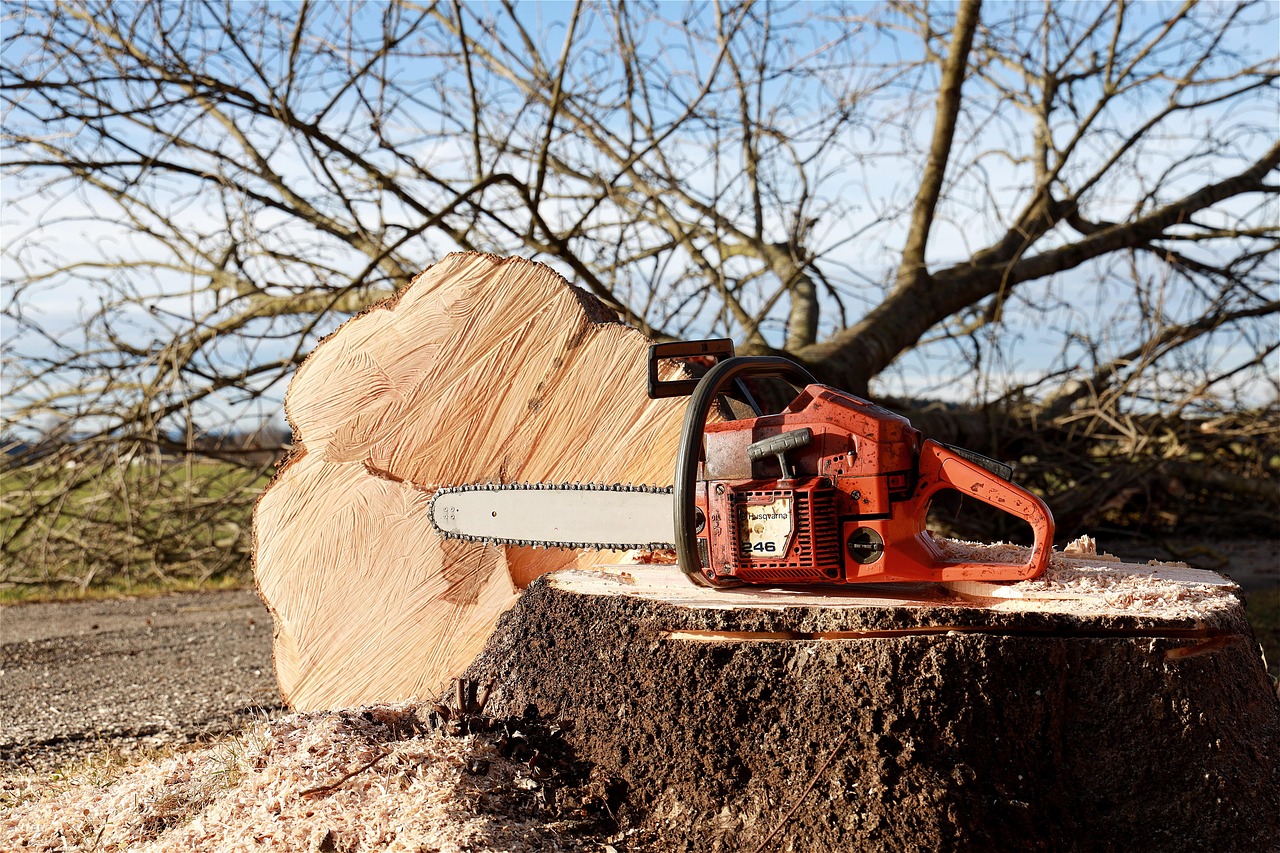Fruit tree pruning is essential for achieving higher organic certification standards. It promotes healthy growth, increases fruit yield, and ensures trees are resilient against pests and diseases, all while maintaining compliance with organic farming practices.
Pruning fruit trees is a crucial practice that goes beyond aesthetics. It is a fundamental part of organic farming, enhancing tree health and productivity. By managing the structure and growth of fruit trees, farmers can optimize light exposure, air circulation, and nutrient distribution. This management directly contributes to better fruit quality and quantity. Organic certification bodies require adherence to specific agricultural practices, including sustainable pruning techniques that align with organic principles.

Understanding the importance of pruning is the first step for any organic grower. Proper pruning not only helps in meeting organic certification standards but also plays a vital role in producing high-quality fruit. Each tree species has its unique needs, and recognizing these requirements can lead to improved results.
Benefits of Pruning for Organic Certification
Pruning offers numerous benefits that are critical for maintaining organic standards. Here are some key advantages:
- Increased Airflow: Properly pruned trees allow better airflow, reducing the risk of fungal diseases.
- Enhanced Sunlight Exposure: Thinning out branches ensures that all parts of the tree receive adequate sunlight, promoting uniform ripening.
- Improved Pest Management: Regular pruning can help identify and eliminate pest problems early, reducing the need for chemical interventions.
- Better Nutrient Distribution: Pruning encourages better nutrient uptake by focusing the tree’s energy on fewer, healthier branches.
- Higher Yield: With more efficient structure and health, pruned trees tend to produce a higher quantity of quality fruit.
For organic growers, meeting certification standards is imperative. The National Organic Program (NOP) outlines specific requirements for organic practices, including those related to tree management. Farmers must ensure that their pruning practices do not compromise the integrity of their organic operation.

Best Practices for Pruning Fruit Trees
To achieve optimal results while adhering to organic standards, growers should follow best practices when pruning. Here are some recommended techniques:
- Timing: Prune during the dormant season for most fruit trees. This is typically late winter or early spring before new growth begins.
- Tools: Use clean, sharp tools to make precise cuts. This minimizes damage to the tree and reduces the risk of disease.
- Remove Dead or Diseased Wood: Regularly inspect trees and remove any branches that show signs of disease or decay.
- Crown Thinning: Thin out crowded branches to improve air circulation and light penetration.
- Cut at the Right Angle: Make cuts at a 45-degree angle to promote healing and reduce water accumulation on cuts.
Understanding Organic Certification Standards
The process of obtaining organic certification involves compliance with various standards set by regulatory bodies. For fruit growers, this includes specific guidelines on how to manage their trees, including pruning practices. Below is a summary of key certification criteria related to tree pruning:
| Standard | Description |
|---|---|
| Natural Practices | Pruning must promote natural growth patterns and support tree health without synthetic chemicals. |
| Pest Management | Methods used should enhance pest resistance through healthy tree structure rather than chemical control. |
| Disease Prevention | Practices must aim to prevent disease through proper maintenance and care. |
| Sustainability | All methods employed should be sustainable and not harm the ecosystem or soil health. |
Awareness of these standards helps growers maintain compliance while ensuring they produce healthy fruit. Pruning is more than just a task; it is a strategic practice that contributes to the overall success of an organic orchard.

As organic farming grows in popularity, understanding the nuances of pruning will be essential for current and aspiring growers alike. This knowledge not only enhances tree health but also aligns with the ethical practices expected in organic agriculture.
Techniques for Effective Fruit Tree Pruning
Effective pruning techniques are crucial for maintaining the health and productivity of fruit trees. Each technique has specific benefits that align with organic farming practices. Understanding these techniques allows growers to make informed decisions about how to manage their trees efficiently.
Types of Pruning Techniques
There are several types of pruning techniques that organic growers can utilize. Each serves a unique purpose in enhancing the growth and yield of fruit trees:

- Thinning: This involves removing entire branches or shoots to reduce the overall density of the tree. Thinning promotes better air circulation and sunlight penetration, which is vital for fruit development.
- Heading Back: This technique involves cutting back the tips of branches to encourage bushier growth. It helps control tree height and increases the number of fruiting buds.
- Renewal Pruning: Used primarily on older trees, this method rejuvenates the tree by removing old, unproductive wood. It encourages new growth and can lead to a healthier tree.
- Maintenance Pruning: This ongoing practice involves regularly trimming dead, diseased, or damaged branches to keep the tree healthy and productive.
Seasonal Considerations for Pruning
The timing of pruning is essential to maximize benefits and minimize stress on the trees. Different seasons offer various advantages:
- Winter Dormancy: Late winter or early spring is ideal for most deciduous trees. Pruning during dormancy encourages vigorous growth in the following growing season.
- Summer Pruning: Light pruning during summer can help control growth and remove suckers. It also allows growers to assess tree health while foliage is present.
- Post-Harvest Pruning: After harvesting fruit, some growers prune to remove any damaged or diseased wood. This helps prepare the tree for dormancy and improves overall health.
Tools for Pruning Fruit Trees
Having the right tools is essential for effective pruning. Here are some commonly used tools along with their purposes:
| Tool | Description |
|---|---|
| Hand Pruners | Ideal for small branches and precise cuts. They are essential for detailed pruning work. |
| Loppers | These are used for larger branches. They provide extra leverage to cut thicker wood. |
| Saws | A pruning saw is necessary for cutting larger branches that cannot be managed with pruners or loppers. |
| Hedge Trimmers | Used primarily for shaping and maintaining smaller fruit trees or bushes. |
| Protective Gear | Always wear gloves and eye protection when pruning to avoid injury from sharp tools. |
Using clean, sharp tools minimizes damage to trees and reduces the risk of disease transmission. Regular maintenance of tools is also essential to ensure they function effectively.
Pest and Disease Management Through Pruning
Pruning plays a significant role in managing pests and diseases in fruit trees. By maintaining a healthy tree structure, growers can reduce the likelihood of infestations and infections.
Identifying Pests and Diseases
Recognizing common pests and diseases is vital for effective management. Some issues can be mitigated through proper pruning:
- Fungal Infections: Removing overcrowded branches can help prevent fungal spores from spreading due to poor air circulation.
- Pest Habitats: Thinning branches reduces potential habitats for pests like aphids, mites, and caterpillars.
- Sunscald Prevention: Proper pruning helps manage sunlight exposure on the bark, preventing damage from sunscald, especially in younger trees.
Integrated Pest Management (IPM)
Adopting an Integrated Pest Management approach alongside pruning practices can enhance pest control measures. IPM combines various strategies for sustainable pest management, including cultural practices, biological controls, and mechanical methods.
When combined with thoughtful pruning, IPM can lead to a more resilient orchard that meets organic standards while minimizing reliance on chemical treatments.
A well-maintained orchard not only yields higher quality fruit but also supports biodiversity and promotes a healthy ecosystem. Understanding the connections between pruning, pest management, and organic practices is essential for successful fruit tree cultivation.
Common Fruit Tree Varieties and Their Pruning Needs
Different fruit tree varieties have specific pruning requirements that can greatly influence their health and productivity. Understanding the unique characteristics of each type of tree is essential for effective management, particularly in an organic setting.
Apple Trees
Apple trees are popular among growers and have distinct pruning needs. They benefit from:
- Open Center Formation: This technique encourages a central leader with multiple scaffold branches, allowing sunlight to penetrate and air to circulate.
- Thinning Cuts: Regularly removing older branches helps maintain vigor and promotes fruit production on younger wood.
- Annual Maintenance: Pruning should occur annually to control shape and size, ideally during late winter or early spring.
Pear Trees
Pear trees require a slightly different approach compared to apple trees. Key practices include:
- Central Leader System: Similar to apples, pear trees benefit from a central leader structure that maximizes light exposure.
- Fruit Spur Management: Pears produce fruit on spurs. Pruning should focus on promoting healthy spur growth while removing competing shoots.
- Minimal Pruning: Over-pruning can reduce yield. Regular maintenance every few years is often sufficient for healthy growth.
Cherry Trees
Cherry trees can vary significantly between sweet and sour varieties, but both require careful pruning:
- Summer Pruning: Light pruning during the summer months helps control size and shape while reducing potential disease spread.
- Remove Suckers: Regularly removing suckers that grow from the base of the tree is essential for maintaining energy directed towards fruit production.
- Avoid Heavy Pruning: Excessive cutting can lead to tree stress and reduced fruiting. Focus on maintaining a balanced shape.
Pruning Techniques by Tree Age
The age of a fruit tree greatly influences the type of pruning techniques that should be applied. Different stages of growth require different approaches to maximize health and productivity.
Young Trees
Pruning young trees is crucial for establishing a strong foundation. Recommended practices include:
- Initial Training: Formative pruning should begin in the first few years to shape the tree and encourage a strong structure.
- Focus on Central Leader: Encourage a single strong leader with well-spaced lateral branches to create a sturdy framework.
- Remove Competing Branches: Eliminate any branches that compete with the central leader to promote upward growth.
Mature Trees
Mature trees require different strategies to maintain health and productivity:
- Regular Thinning: Remove older, unproductive branches to promote new growth and increase sunlight exposure.
- Balance Energy Distribution: Make cuts that help balance the energy distribution among branches, ensuring all parts of the tree receive adequate resources.
- Monitor for Disease: Regularly inspect mature trees for signs of disease or pest damage, addressing issues promptly through pruning.
The Role of Soil Health in Pruning Success
The health of the soil directly impacts the success of fruit tree pruning practices. Healthy soil promotes robust root systems, leading to stronger trees that can better withstand pruning stress.
Soil Management Practices
To support soil health, consider the following practices:
- Add Organic Matter: Incorporate compost or well-rotted manure to improve soil structure and nutrient content.
- Avoid Chemical Fertilizers: Use natural fertilizers to maintain soil microbiome health, which is essential for nutrient uptake by trees.
- Cover Crops: Planting cover crops can enhance soil fertility and prevent erosion, ensuring a healthy growing environment for fruit trees.
Soil Testing
Regular soil testing is vital for understanding nutrient levels and pH balance. This information helps growers make informed decisions about soil amendments and fertilization schedules. Optimal soil conditions support vigorous growth and recovery from pruning.
A healthy soil ecosystem not only benefits fruit trees but also contributes to overall biodiversity, enhancing the resilience of the orchard against pests and diseases. By integrating effective pruning techniques with sound soil management practices, organic growers can achieve sustainable success in fruit production.
Challenges in Organic Pruning Practices
While pruning fruit trees is essential for organic certification, several challenges can arise. Understanding these difficulties can help growers develop effective strategies to mitigate them.
Environmental Factors
Environmental conditions significantly affect the success of pruning efforts. Factors such as weather, soil quality, and local pests can impact tree health and growth:
- Weather Variability: Extreme weather events, such as late frosts or heavy rainfall, can stress trees and influence their growth patterns.
- Pest Infestations: High pest populations may require more frequent pruning to manage infestations, complicating the process.
- Soil Erosion: Poor soil management can lead to erosion, reducing the health of trees and their ability to recover from pruning.
Labor Management
Effective pruning requires skilled labor. In many regions, finding trained workers can be challenging:
- Training Needs: Growers must invest time and resources in training staff on proper pruning techniques to maintain orchard health.
- Seasonal Labor: Pruning is often seasonal work, leading to difficulties in maintaining a consistent workforce throughout the year.
- Cost Considerations: Hiring skilled labor can add costs that some organic growers may find challenging to absorb.
The Future of Organic Pruning Practices
The landscape of organic farming is continuously evolving. As more consumers demand organic fruit, growers must adapt their practices to meet these expectations. Innovations in pruning techniques and technologies can enhance productivity and sustainability.
Emerging Technologies
New technologies are being developed to assist with the pruning process. These innovations can help streamline labor and improve precision:
- Drones: Drone technology can aid in monitoring tree health and identifying areas that require pruning, optimizing labor use.
- Sensors: Soil and tree sensors can provide real-time data on moisture levels and nutrient content, informing better pruning decisions.
- Agricultural Software: Farm management software can help track pruning activities, schedule maintenance, and document compliance with organic standards.
Community and Knowledge Sharing
Collaboration among growers is essential for sharing best practices. Community involvement can lead to improved outcomes across the board:
- Workshops and Training: Local agricultural organizations often host workshops to educate growers on advanced pruning techniques.
- Peer Networks: Establishing networks among organic farmers encourages knowledge exchange about challenges and successes in pruning practices.
- Research Collaborations: Partnering with agricultural research institutions can lead to studies focused on optimizing organic pruning methods.
Conclusion
Fruit tree pruning is a vital component of organic farming that directly influences tree health, fruit quality, and organic certification compliance. By understanding the specific needs of different fruit tree varieties and employing appropriate pruning techniques, organic growers can enhance their production sustainably. The integration of effective soil management practices further supports tree vigor, leading to healthier orchards.
The journey toward mastering organic pruning involves navigating various challenges, including environmental factors and labor management. However, advancements in technology and community collaboration present promising avenues for overcoming these obstacles. As the demand for organic produce continues to rise, the importance of efficient and sustainable pruning practices will only grow.
Ultimately, embracing innovative approaches while adhering to the principles of organic farming will enable growers to thrive in an increasingly competitive market. By prioritizing health—both of the trees and the soil—farmers can ensure a fruitful future for their orchards and contribute positively to the environment.
